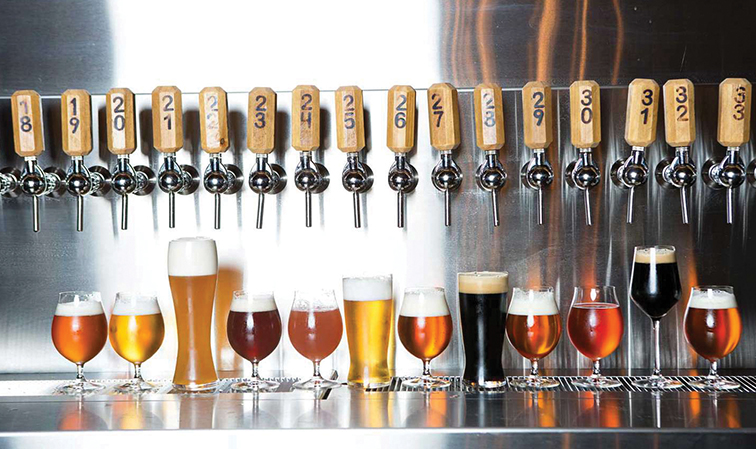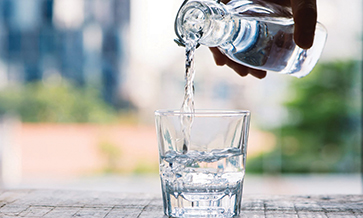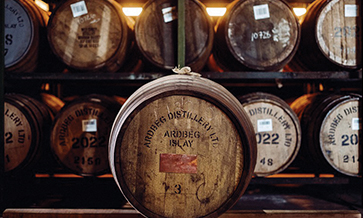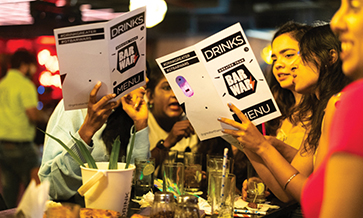Changing consumer preferences, expanding repertoires and the impact of the Covid-19 pandemic on the on-premise have prompted brewers to accelerate their innovation in order to stay resilient.
In the decade to 2021, IWSR data shows that global beer consumption had slipped by -4%. “To counter a long-term trend of declining beer consumption in many markets, the major brewers have adopted a strategy of premiumisation, expansion into new categories, and a focus on the no- and low-alcohol segment,” notes Roisin Vulcheva, Head of Beer Insights at IWSR.
Premiumisation has enabled brewers to sell their beer at a higher price, diluting the impact of any downward pressure on consumption. In 2021, as the beer market recovered from the pandemic lockdowns, the value growth of traditional beer was twice that of volume growth.
Brewers have shifted focus from volume-based models to value-based ones in order to offer more unique experiences. Desperados’ zero-gravity music festival is an example.
Key ways
Premiumisation has been achieved in three key ways: through premiumising existing brands, by investing in craft beer, and by giving more attention to different specialist beer varieties and brands.
Investment in branding and pricing strategies for international markets has been a key focus for many brewers. While a brand in its home market may be perceived as a mainstream offering, in export markets that same brand often has a more premium status amongst consumers – a result of significant investment from brand owners.
The Peroni brand, for example, has been carefully nurtured over several years in international markets to establish and reinforce a premium image. In the UK, it was rarely price promoted in the off-trade, was only sold in small unit sizes and limited number of multi-packs, and pubs and bars that wanted to stock the brand were vetted to check whether they were a good fit.
In Europe, Heineken has chosen to invest in the Birra Morretti brand, positioning the beer as delivering the “authentic taste of Italy” in new markets. In Asia, the Dutch brand Amstel has been launched in China. The Asian Tiger brand is being rolled out in Brazil and Peru as a more upmarket proposition for drinkers.
A priority in Carlsberg’s Sail 27 strategy is to drive value growth by “expanding more vigorously into premium segments”. Their flagship brands, Tuborg and Carlsberg, are gaining increasing visibility in Asia and elsewhere, at the premium end of the market.
Craft goes global
Although the craft beer movement has its origins in small-scale artisan “backyard style production”, the craft beer revolution has evolved quickly. Multinational brewers have partnered with or purchased some of the most high-profile craft brands to take them to bigger, and often international, platforms.
Brands like AB InBev’s Goose Island, Heineken’s Lagunitas and Carlsberg’s Brooklyn, all now have a well-established presence across the globe.
By discretely integrating them into their portfolios, the value of these brands has been preserved and drinkers have continued to show a willingness to pay a premium for them.
The emergence of craft beer was partly underpinned by a rising consumer curiosity about new styles of beer. Beer drinkers were becoming more adventurous in their choices and were prepared to pay more for new beer- drinking experiences.
This prompted global brewers to build their specialist ranges, giving more visibility to wheat, top fermented, porters, stouts and different ale options.
Leffe, Hoegaarden, Grimbergen, Edelweiss, 1664 Blanc and Blue Moon, for example, all play an important role in the premiumisation strategies of their owners.
In the last 5 years, speciality beers have grown by 11% in volume consumption (% volume change, 2016-2021), while the overall global beer market has fallen by 3%.
Beyond tradition
As consumer drinking patterns changed and the at-home occasion grew in importance, the ready-to-drink (RTD) category provided the market with fresh excitement. As a result, the category grew by a volume CAGR of 17% (2017 to 2021).
Hard seltzers are one segment of the RTD category in which brewers have been very active. While the explosive growth of hard seltzers in 2019 impacted all beverage alcohol categories, many consumers in the US switched over primarily from beer.
Between 2018 and 2020, volumes of hard seltzers in the US grew seven-fold. While the growth rate has since moderated, the rise of hard seltzers was driven by a gap in the overall beverage alcohol market.
Consumers were looking for alternatives that were refreshing and flavourful, but also low-calorie and low-sugar. Hard seltzers also tapped into the growing consumer demand for convenience.
The response of brewers to hard seltzers has often blurred the line between RTDs and traditional beer. These included Bud Light Seltzers, Michelob Ultra, Coors Seltzer (now discontinued), Amstel Ultra Seltzer, and Dos Equis Ranch Water.
Future challenges
As the RTD category continues to evolve to meet shifting consumer preferences, brewers are equally keeping an eye on category trends. AB InBev, for example, is doubling its investment in Cutwater Spirits, which it acquired in 2019.
Brewers are well placed to invest in the RTD category: IWSR consumer research shows that across key markets, more than 50% of consumers are influenced to purchase RTDs made by a well-known spirits, beer or soft-drink brand. RTDs produced by a local craft brewery or distillery also rate highly.
The threat to traditional beer sales does not just come from consumers switching to alternative alcoholic drinks, but from drinkers choosing to drink less alcohol. IWSR data shows that beer already dominates the no-alcohol space, accounting for over 60% of the no-alcohol category by both volume and value.
According to Vulcheva, many of the world’s most familiar beer brands now offer a no-alcohol alternative as brewers look to capture a share of the no-alcohol beer market.
This market jumped by as much as 14% in 2021 versus 2020 and is set to rise by another 50% between 2021 and 2026 according to IWSR data.
Heineken, for example, has invested in a global rollout of the Heineken 0.0 no-alcohol beer, while AB InBev launched Corona Cero in Europe in 2022, and Asahi Super Dry 0.0% announced its global launch in Q4 2022.
Investment in the no-alcohol segment allows brewers to expand the drinking occasions they can play in, while also offering some immunity from possible future restrictions on advertising in some markets.














